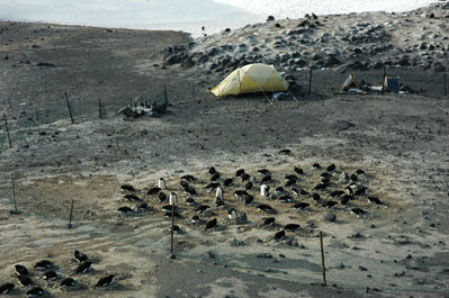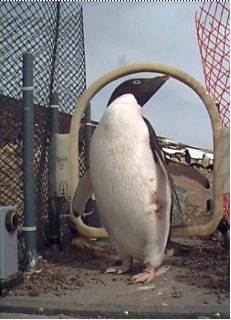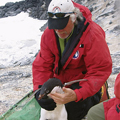Penguins on the Scale

We’ve now got our stuff set up, including the weighbridge. This is an apparatus that identifies penguins (from the computer chip we inject under their skin) when they walk through a hoop antenna, and at the same time records their body weight. They have to walk through this apparatus because a fence, surrounding the nests of about 80 pairs, has just one opening and in this opening is the weighbridge. Most of these penguins remember this setup from previous years, and those that are new to it watch the others. Quickly, they follow along. The data from this apparatus are stored in a small computer that is contained in a tent. This year I had a bit of a problem with the solar regulator for this system, but folks from the CommShop in McMurdo helped me to replace it. I owe them BIG TIME! In the photo above you see that a fence encircles two groups totaling about 80 nests. A computer is in the tent, powered by the solar panels to the right. The weighbridge is to the left of the tent.

At far left is a photo of a PIT (passively interrogated transponder) and the needle used to inject it under the skin of penguins (and dogs and cats).

At near left is a penguin standing on the scale while it investigates the antenna hoop that it just walked through. The item to the left is a photocell that, working with another on the other side of the antenna, turns the system on or off depending on which one gets tripped first by the penguin. The weighbridge allows us to gather information that would have been unheard of just 15 years ago.
One can reliably capture a penguin only once; the second time the penguin has its suspicions and is wary. Thus, once we inject the PIT tag we can then determine its weight as it changes over the season, and also the weight of the food that it fed to its chick(s), by subtracting its departure weight from its arrival weight on each visit to the nest. We’ve found that this amount of food varies depending on several things, including the size of the colony in which the penguin lives. At Royds, a tiny colony, parents bring back more food more often than at Cape Crozier, a large colony, where there is a great deal of competition for food. Little did we know when we started out!

 No comments
No comments 






